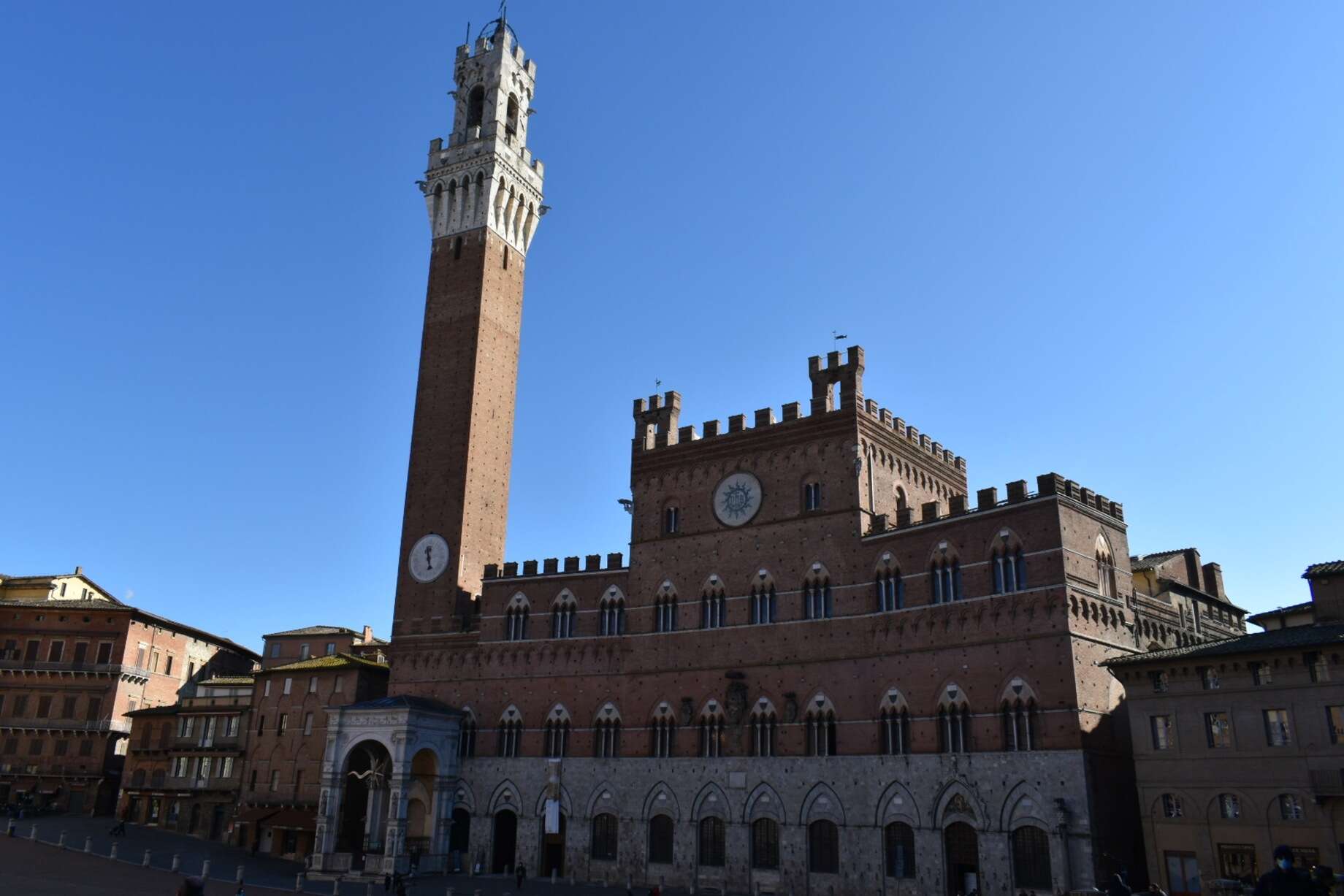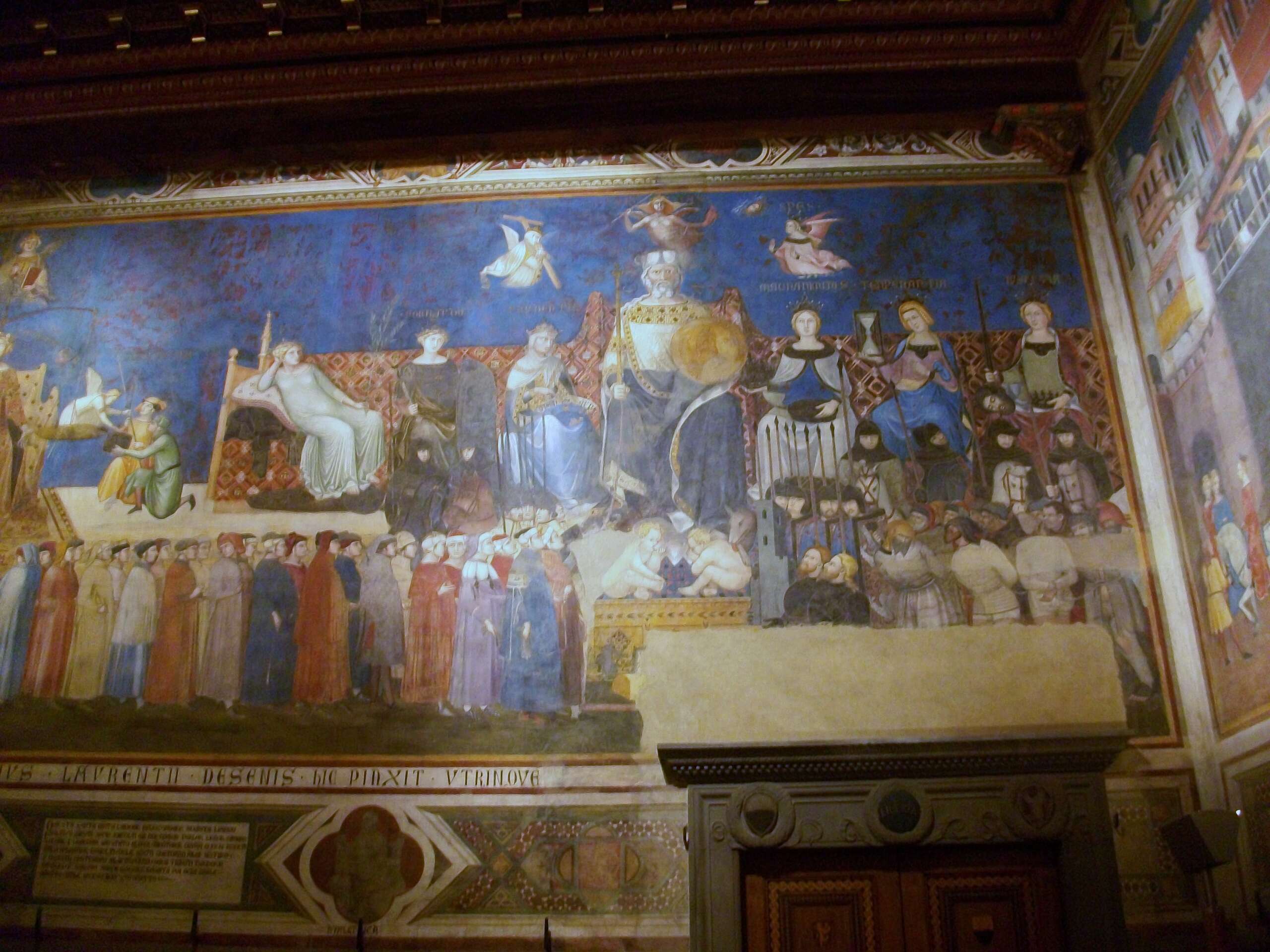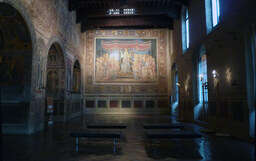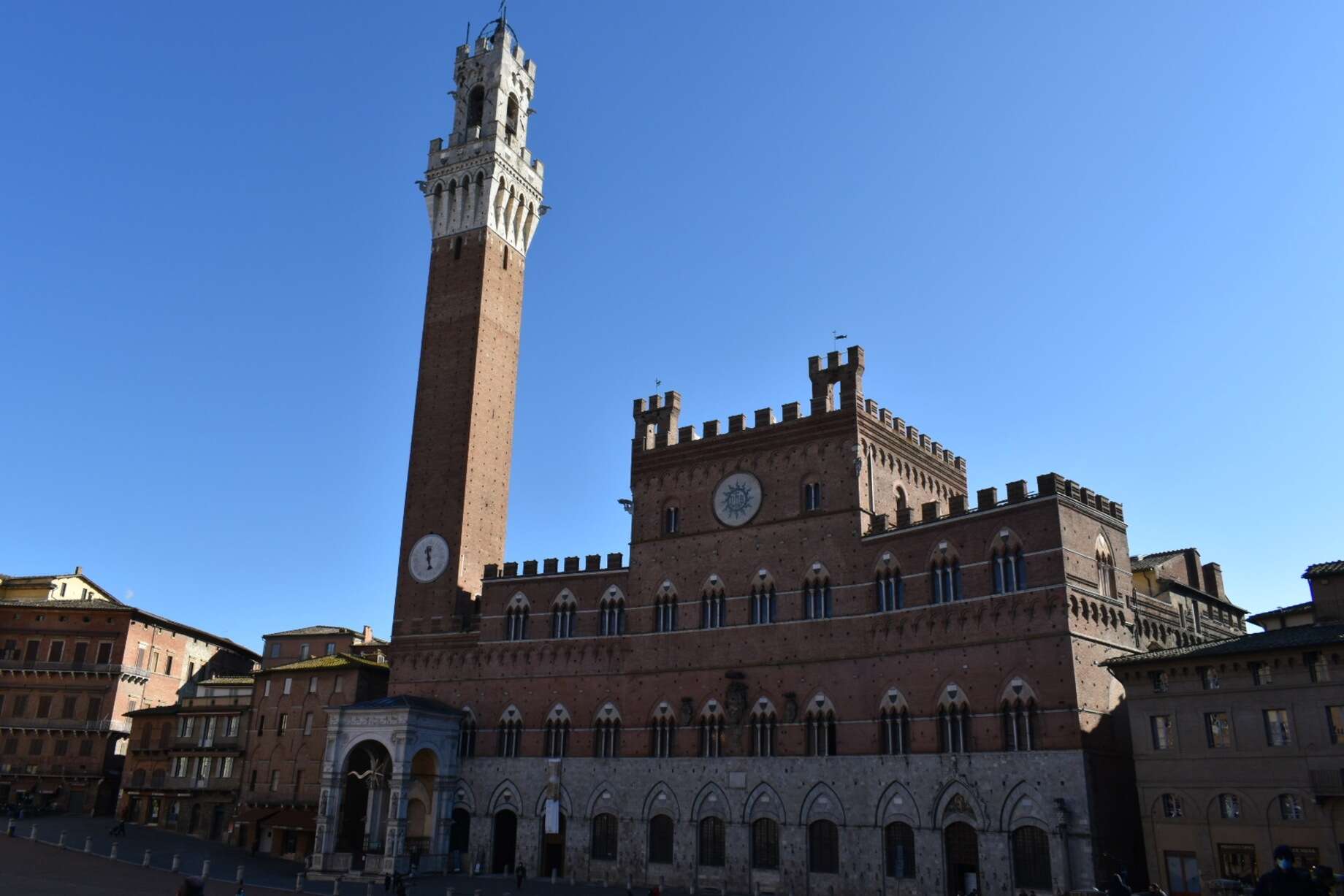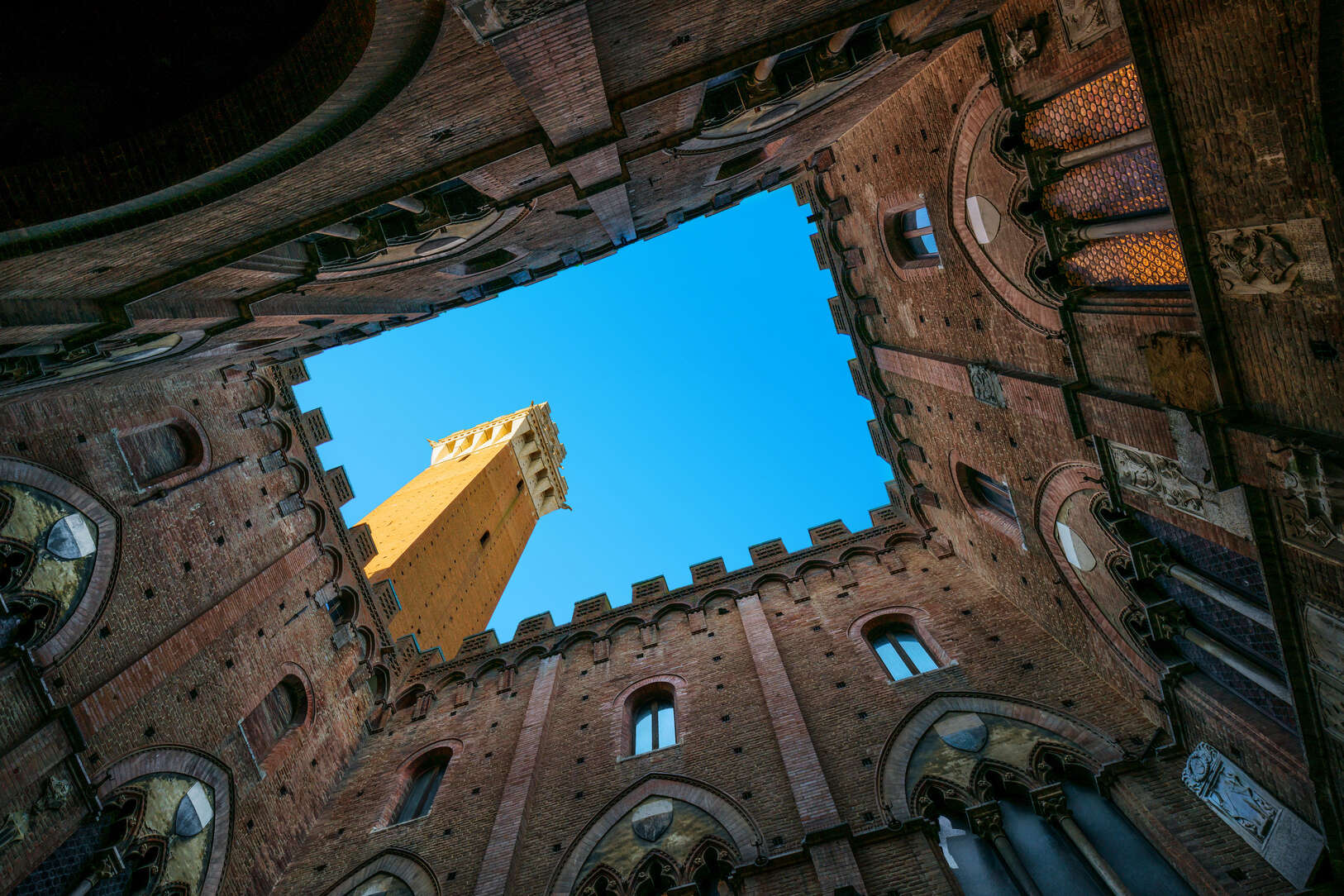Palazzo Pubblico
Palazzo Pubblico is the town hall of Siena, Italy. It was designed by a group of architects headed by Lippo Memmi. The construction began in 1297 and its original purpose was to house the republican government, consisting of the Podestà and Council of Nine. The palazzo is perceived as a perfect architectural expression of the city-state.
Medieval architectural style
The design of the building is similar to that of other civic buildings in Italy such as Pisa's Palazzo della Carovana and Verona's Palazzo della Ragione, but unlike them, it kept its original form from when it was built 700 years ago. The outside of the structure is an example of Italian medieval architecture with Gothic influences. The lower story is stone; the upper crenelated stories are made of brick.
The tower was designed to be taller than the tower in neighboring rival Florence; at the time it was the tallest structure in Italy. It was fitted with a mechanical clock during the mid-14th century. Nearly every major room in the palace contains frescoes.
The old treasure inside the palace
The Civic Museum of Palazzo Pubblico is located inside Palazzo Pubblico. There are more than 400 paintings and sculptures dating from the 13th to the 15th century. It preserves the most significant public collections of medieval art. Among them are works by Simone Martini, Ambrogio Lorenzetti, Domenico Beccafumi, Pietro Perugino and Luca Signorelli. You can also find here the frescoes made by Ambrogio Lorenzetti in the 1340s that decorate the Tapestry Room and the Room of Peace.
A number of collections from the Italian elite
The museum was founded by Grand Duke Leopold II of Lorraine in 1852 and was later expanded with the addition of a number of works from the region. Its collection was begun with works from the commune's own assemblages as well as donations from private individuals.
